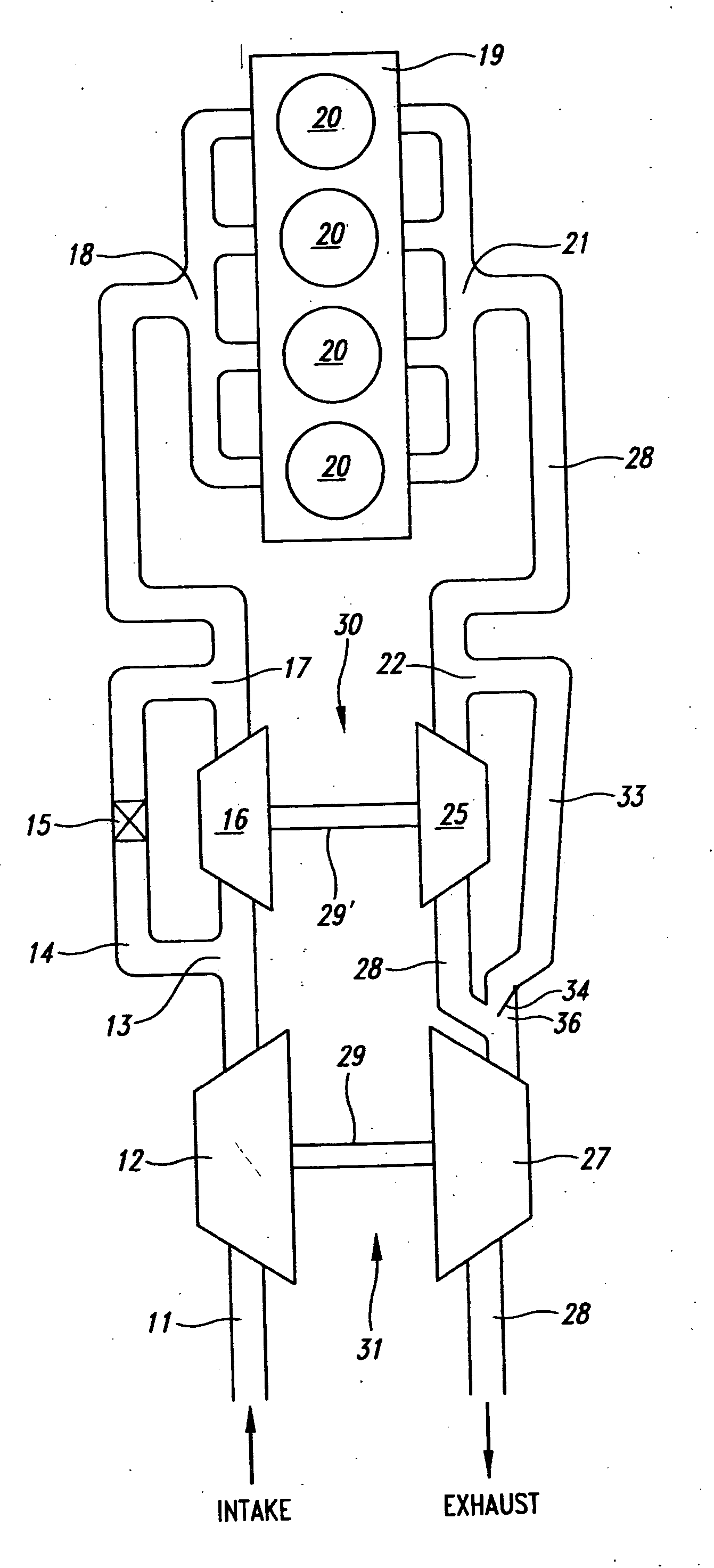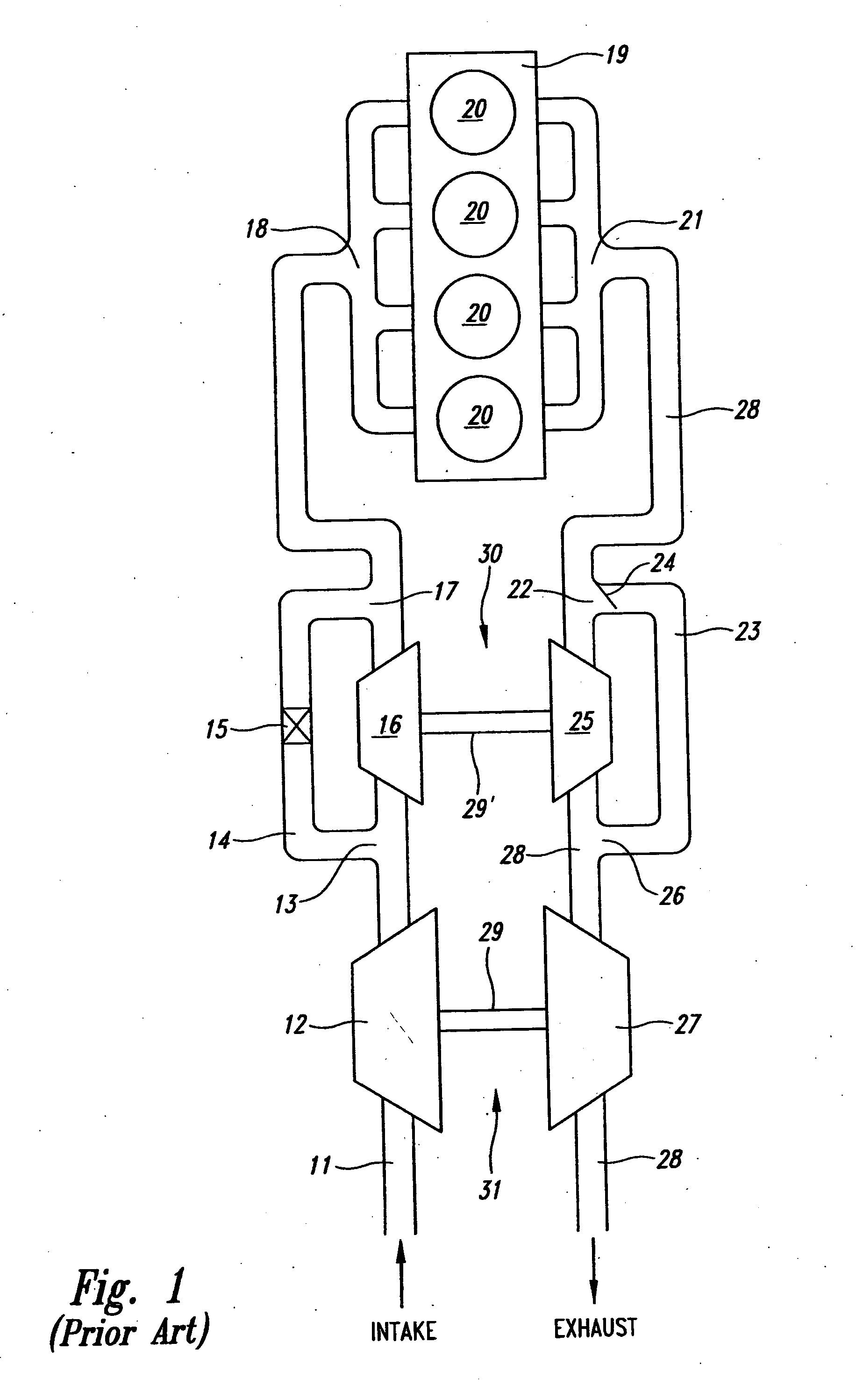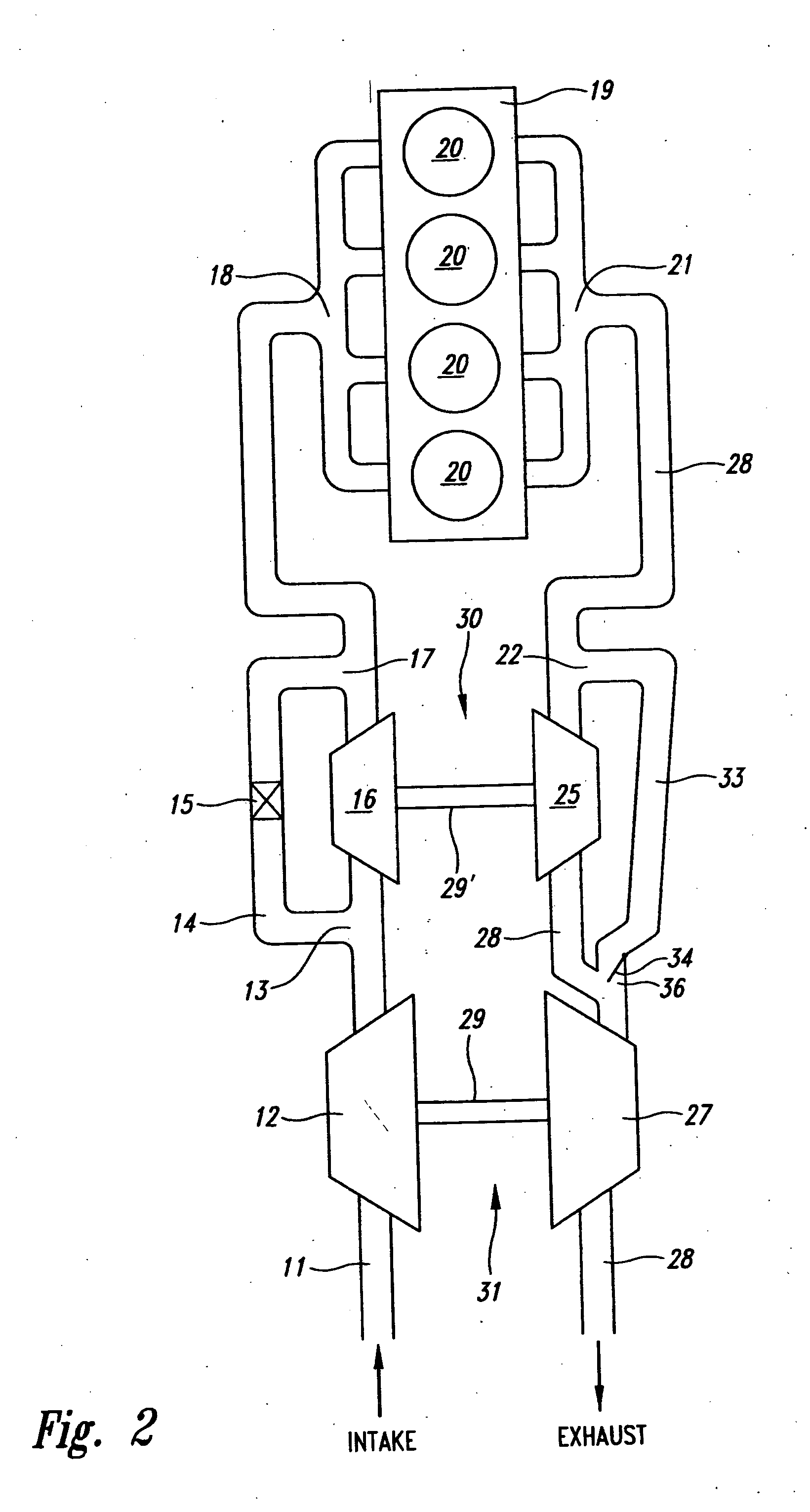Multi-stage turbocharging system with efficient bypass
a turbocharging system and multi-stage technology, applied in the direction of machines/engines, stators, mechanical equipment, etc., can solve the problems of unnecessary loss of useful energy, reduce the efficiency of internal combustion engine systems, and reduce the amount of energy. , to achieve the effect of saving energy, and preserving, capturing, utilizing and/or reducing the amount of energy
- Summary
- Abstract
- Description
- Claims
- Application Information
AI Technical Summary
Benefits of technology
Problems solved by technology
Method used
Image
Examples
Embodiment Construction
[0028]FIG. 1 shows an internal combustion engine system with a multi-stage turbocharging and bypass system from the prior art. Referring to FIG. 1, ambient air enters the system through intake line 11. The intake air may optionally be mixed with recirculated exhaust gas (EGR) to form a charge-air mixture. The ambient air or EGR / ambient air mixture (“charge-air”) mixture flows through and is compressed by a first-stage low pressure air compressor 12.
[0029] After compression in compressor 12, the intake air may flow through a second-stage high pressure air compressor 16 for further compression. Alternatively, the intake air may be diverted at port 13 to optional bypass channel 14 and return to the intake line at port 17, as regulated by the opening or closing of optional bypass valve 15.
[0030] Intake air then enters the intake manifold 18 and into combustion chambers 20 of engine 19 through conventional valves (not shown) in a conventional manner. Following combustion in the combust...
PUM
 Login to View More
Login to View More Abstract
Description
Claims
Application Information
 Login to View More
Login to View More - R&D
- Intellectual Property
- Life Sciences
- Materials
- Tech Scout
- Unparalleled Data Quality
- Higher Quality Content
- 60% Fewer Hallucinations
Browse by: Latest US Patents, China's latest patents, Technical Efficacy Thesaurus, Application Domain, Technology Topic, Popular Technical Reports.
© 2025 PatSnap. All rights reserved.Legal|Privacy policy|Modern Slavery Act Transparency Statement|Sitemap|About US| Contact US: help@patsnap.com



